If you’ve been in or around any major beer event in Colorado for the past four years or so, there’s a good chance you’ve rubbed elbows with photographer Dustin Hall, founder of the Brewtography ProjectOpens in new window. Since moving to Colorado four years ago, he has photographed more than 140 breweries, distilleries and cideries, and has documented some of the biggest beer festivals in the state, including Great American Beer Festival, Collaboration Fest, and Big Beers Belgians & Barleywines Festival. He is the de facto house photographer for the Colorado Brewers Guild, and you’ll find his photos all over local breweries’ social media sites.
He’s been so prolific, in fact, that it’s easy to forget that photography is just a hobby of his. That’s right — the dude has a day job. When he moved to Colorado with his wife, he mostly just wanted to go rock climbing when he wasn’t busy with his tech job. It wasn’t long before some rock climbing friends turned him on to craft beer. He started bringing his camera to breweries, and now, some 5,000 photographs later, he’s publishing Discovering Colorado BreweriesOpens in new window later this year, a 200+ page photography book that captures the magic of Colorado breweries and the people who make them tick.
(MORE: 7 Tips for Becoming a Better Beertographer)
“Just a Hobby”: the Origins of Brewtography
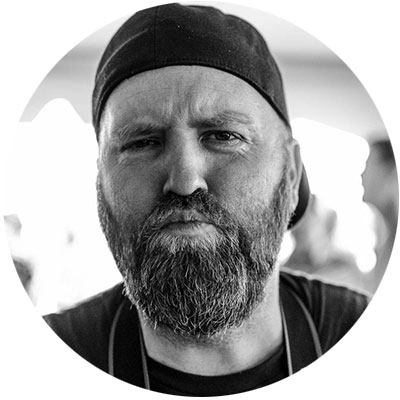
“I’ve been a photographer on and off now for about 14 years. The subject matter has changed based on where I’ve lived and my interests,” Hall says. “When I moved to Colorado about four years ago, I began rock climbing with Dave, a manager over at Hogshead BreweryOpens in new window. He invited me to try their stuff, and I immediately fell in love with their beers.”
After picking up the craft beer bug, Dustin began traveling to more Colorado breweries. It wasn’t long before his photographer’s eye kicked in. “There were all these breweries in Colorado, but everyone that you walked into was very unique. They all have their own themes and their own way of doing things. So I really fell in love with the aesthetics of the various breweries, from the architecture to the materials. The first brewery I photographed was Hogshead. They loved the idea and I had a lot of fun doing it.”
Since photography was a hobby, Dustin has rarely sought financial reward from his work. “I’ve always provided the breweries with the photographs I take [free of charge]. When I go on a brewery’s website and see the photos in use, that’s what makes me happy. What I want is to be a catalyst for people, where they see these photos and want to go check the brewery out for themselves. That’s what it was always about.”
From Hobby to Project
“The idea for the book didn’t come about until probably two years ago,” Hall tells me. “A lot of people had started to comment that no one was photographing the industry the way I was doing it.”
He remembers two people in particular had a strong impact. The first was Scott Witsoe, founder of Wit’s End Brewing CoOpens in new window. The second was his neighbor, Jake Norris, who worked with Stranahan’s Whiskey and later Law’s Whiskey House. After seeing some photos Dustin shot at a distillery, Norris quipped, “I see a book in your future.”
Both saw something unique in Dustin’s approach and encouraged him to explore the niche. “A lot of people write about beer, of course, and maybe get a couple of great ‘hero shots’ of the brewery, and then do a story or a history or whatever. And that’s been done very well, but there hasn’t really been a photography book.
“I started to think about a large format book, with no words and just photos. I wanted the pictures to tell the story.”
The forthcoming book will be 11 in. x 13 in., making it over two feet wide when open. Large format, indeed! And with its 200 pages of images, he assures me it’s a “proper coffee table book.”
(MORE: What’s Old Is New: Coolships in American Craft Brewing)
Putting in the Hours (and then some)
As it turns out, putting together a photography book is not all about pints and pictures. Dustin’s process was more time-intensive than you might think. “I learned to homebrew, because knowing how the brewing process works helps me prepare for shots. I don’t have to annoy brewers by asking ‘what are you doing now?’ every five minutes. So 99 percent of my photos are not staged. For the most part, I want things to be very natural, and that’s why my shoots tend to last a while.”
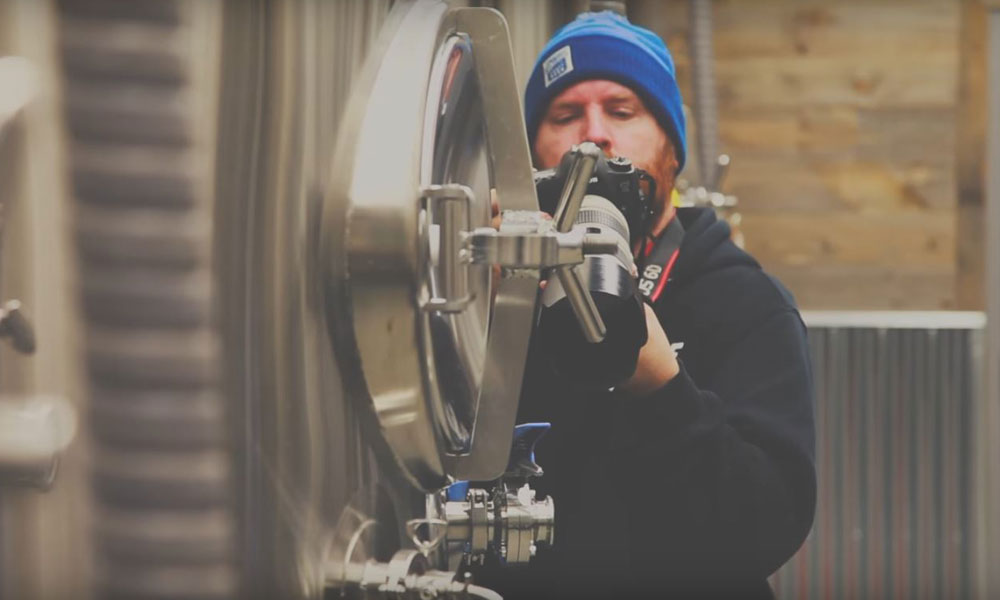
And he means a while. “I spent 12 hours photographing New Belgium. I was at Great Divide for nine hours. By about hour six, the folks there realized I was legitimately interested in this stuff, and they wound up showing me a whole backroom full of rare bottles. They don’t normally take anyone back there, because there’s no reason to. But if they see that you’re genuinely interested in what’s going on, they’re eager to show you some really cool stuff.”
The book will wind up featuring about 70 of the 140 breweries he’s photographed. Although he’s located in Denver, he insisted on traveling beyond nearby breweries. “It was really important to me to make sure this book wasn’t just about the Front Range. I wanted this book to be about Colorado, not just Denver.” As a result, he was able to feature out of the way gems like Ska Brewing (Durango) and Butcher KnifeOpens in new window (Steamboat Springs), to name a few.
An Evolving Focus
Part of what is so cool about Dustin’s story is the way his photographs have evolved along with his personal journey into craft beer. “If you look back at the first 10 or so breweries I photographed, there isn’t a single person in any of the shots. It was purely about the aesthetics of the building. I just really liked the woods and the metals and the contrast they created.”
“What slowly evolved from there was a love for the culture of the industry — the people behind the scenes, the brewers, the people working front of house.” Dustin Hall, the Brewtography Project
It wasn’t long, however, before he turned his lens on the people that bring those buildings to life. “What slowly evolved from there was a love for the culture of the industry — the people behind the scenes, the brewers, the people working front of house, etc. So the photos grew to be heavily people-focused as I grew more interested in showing that side of the industry.”
Part of Dustin’s inspiration for the book was to correct the misconception that working at a brewery is all glitz and glamor. “People don’t realize how much work goes into getting that beer in front of you. So I’ve got lots of photos of people cleaning out kettles, mopping floors, doing the mundane duties that no one thinks about as being part of brewing.”
Putting the “Fun” in Fundraising
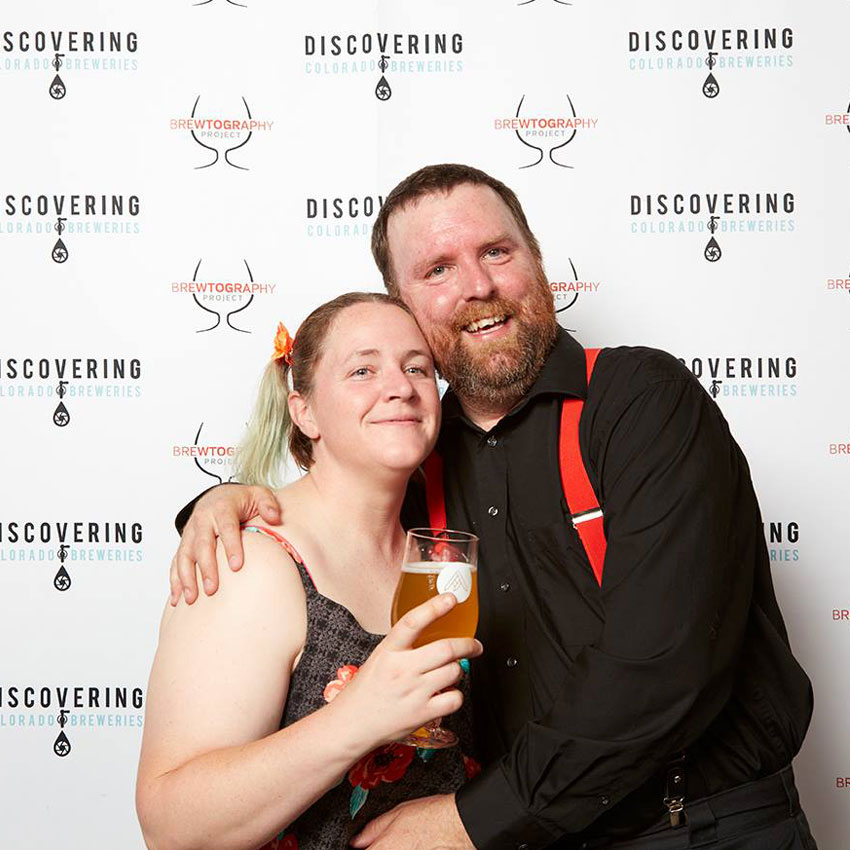
The book was made possible by a successful Kickstarter campaign, which required meticulous planning by Dustin and his wife Marcia. “We worked for about six months planning events. We wanted to do nine unique events at nine unique breweries, and we wanted to incorporate local artisans and other ‘craft’ people.”
Their first was at Baere Brewing Co., where Dustin brought his own homebrewing expertise to, uh, bear (and beer). “We collaborated on a stout that they fermented in a wine barrel with a mixed culture. It was so good! We worked with Tony’s Market, who helped out with killer cheese plates, and all the profits from those went straight to the Kickstarter.” Other collaborative events followed at breweries like Mockery, Ska and Great Divide. The grand finale was a formal event at Avery, complete with red carpet, limousines and an Avery beer brewed specially for the occasion.
“Everything was so well planned, and everyone did such a great job, that we hit our goal within seven hours of launching. We were still at the first event when the project was officially funded.”
When asked about the success, Dustin is characteristically (and emphatically) deferential: “Sure, planning helped, but it was more about everyone getting together to help us. It was all about the community. Everyone just came together and chipped in to help make this happen.”
(MORE: Mind-Blowing Beers Made with Barrel-Aged Coffee Beans)
Finding the Essence of the Craft Community
After spending so many hours with craft brewers and beer lovers, Dustin offered a few insights into what makes the community tick. “First, it’s a very small community, and somewhat incestuous — but in a good way. People move around a whole lot! In fact, I photographed a brewery, and then photographed another one a week later, and the same person had left the first and started working at the second, all within a week!
“I’ve also learned it’s a lot of work. People do this because they are truly passionate about it; they really love it. It’s really interesting when I go into a new brewery environment and talk to the people there about what I’m doing. I’ll tell them I’ve photographed 140 breweries and, inevitably, they’ll proceed to explain the entire brewing process to me. So I’ve heard it 140 times at this point, but I still love the way they tell it. They tell it with such passion!”
There is an obvious parallel here with Dustin’s own work. “I mean, I don’t usually talk about my day job, but if you ask me about the book, I’ll talk your ear off, because it’s something I really love. And brewers do what they really love. That’s why I fell so in love with the culture, the buildings, the environments. I love how into it they all are. That, to me, is the biggest thing.”
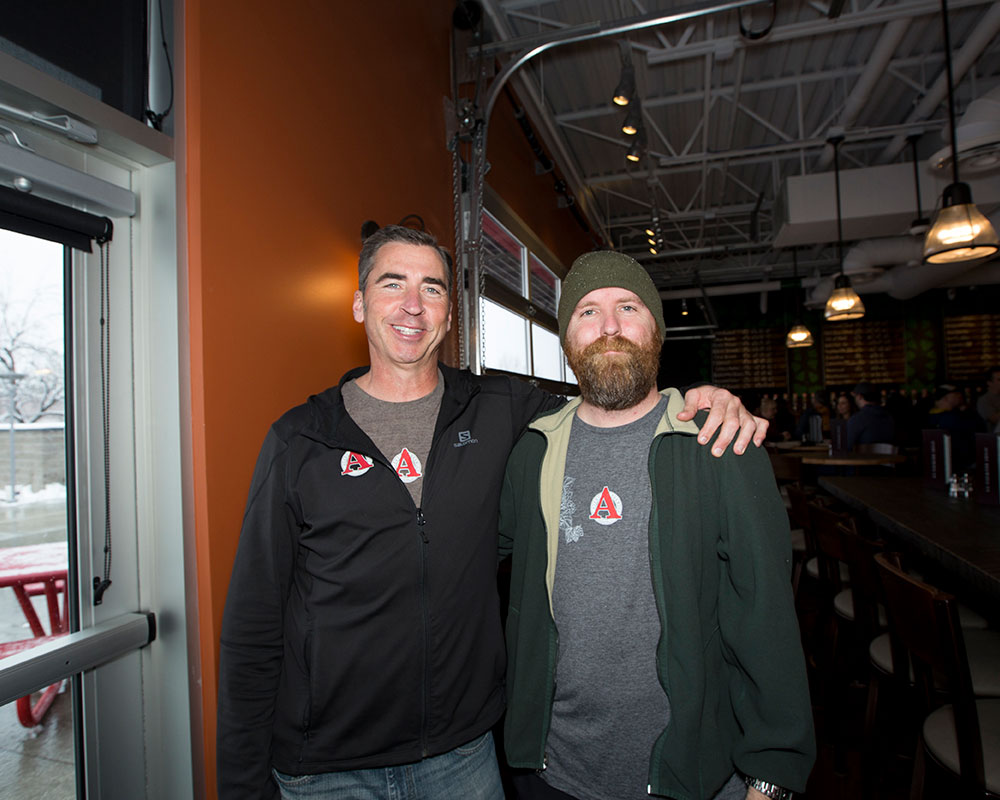
We spend several minutes walking through the “Acknowledgements” page. Boring as it sounds, it’s hard not to absorb the excitement as he explains why and how much he owes to each name on the list. I realize he’s not merely describing brewers and book binders, but friends, and I start to understand what he’s been meaning by “community” all night. These are his teammates, the Brewtography Project’s innumerable sine qua nons, and I can’t help but think he would list them all on the cover if only space would permit.
And that basically sums Dustin up: he is so humble, so grateful for the community his camera captures so beautifully, that it’s easy to forget about the guy peering through the viewfinder, the guy who spent (and still spends) 12 and 14 hour days photographing craft breweries for free, for fun, in his spare time.
It is in that last sense that Dustin represents the spirit of the craft community so well: at the end of the day, he’s just a passionate person doing what he loves, simply because he loves doing it. It just so happens he’s also insanely good at it. He is, in a word, a craftsman.
For more on the Brewtography Project and Dustin’s other work, check out the Brewtography Project websiteOpens in new window, his Facebook page,Opens in new window InstagramOpens in new window and TwitterOpens in new window.
CraftBeer.com is fully dedicated to small and independent U.S. breweries. We are published by the Brewers Association, the not-for-profit trade group dedicated to promoting and protecting America’s small and independent craft brewers. Stories and opinions shared on CraftBeer.com do not imply endorsement by or positions taken by the Brewers Association or its members.
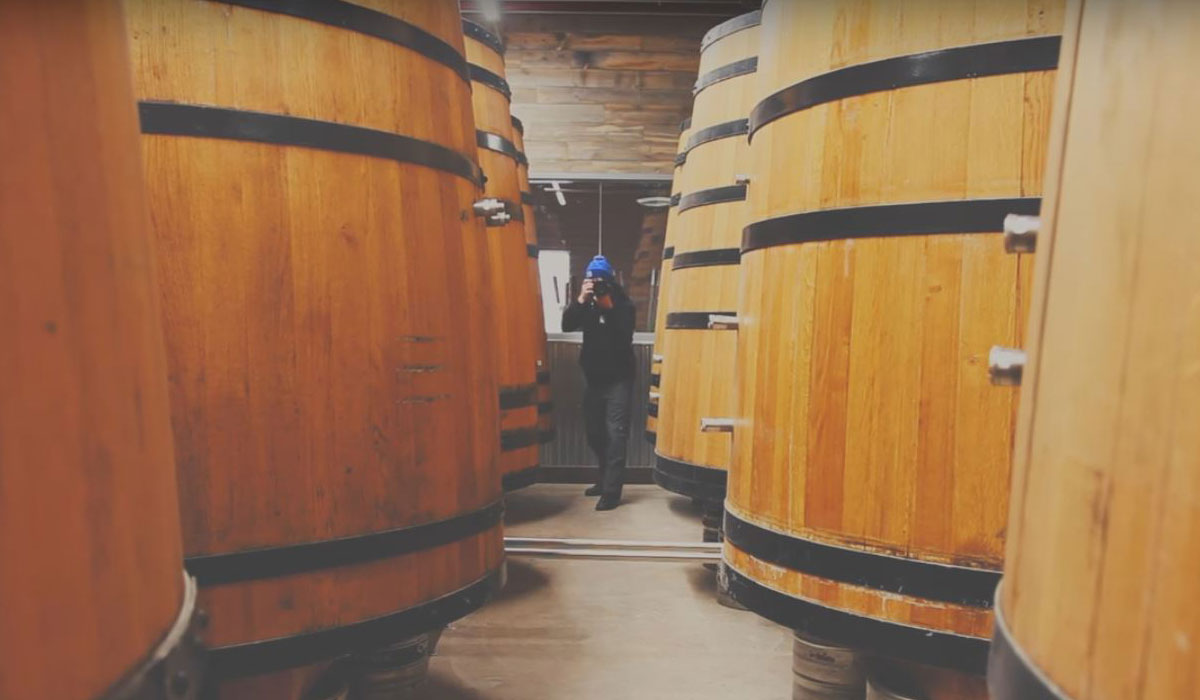
Share Post